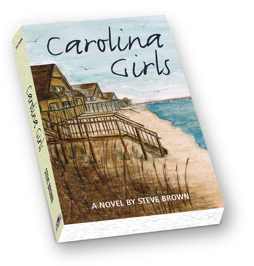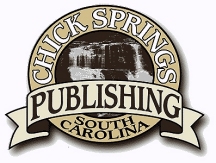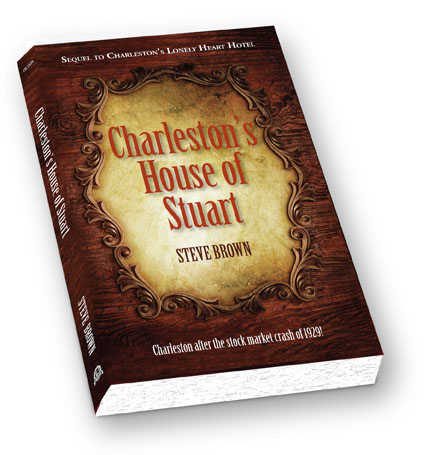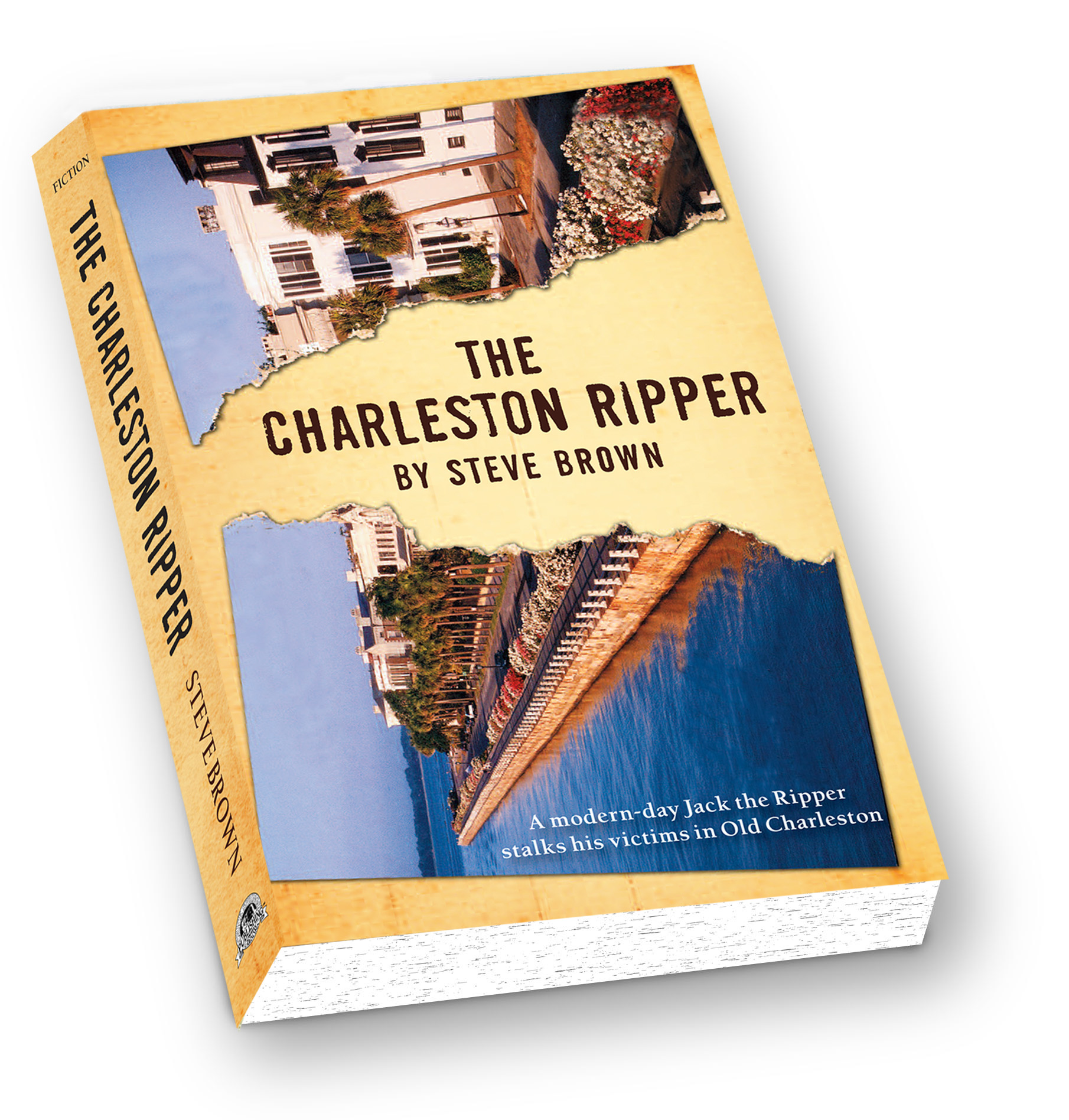From the story ...
The killer had been tracking Bill and Mary Ann for the last two nights. He knew where they were staying, and knew they would return to the same place, at the same time, and on the correct date. All he had to do was cruise the Battery until they showed up.
And there they were!
The killer scanned the stone promenade and then zeroed in on his prey. With a stiff breeze off the harbor, few couples were strolling along the rock citadel, though the view was spectacular: the moon low in the night sky, its reflection shimmering out to sea.
He couldn’t have picked a better setting.
Mary Ann thought she heard someone . . .
“What?” asked her husband, turning his head.
She felt Bill’s arm jerked from around her waist and saw him pitch forward, a bicycle driving hard between her husband’s legs and riding Bill down.
“Sorry,” said the rider, as he let go of the bike, dropping it to the promenade and Bill Nichols with it.
Mary Ann stifled a cry. For a moment, she’d been frightened, but it’d been nothing but a silly accident. A young man with long blond hair stood over her husband, a student wearing jeans, sweatshirt, and backpack. At his feet lay a twenty-one speed.
But instead of helping her husband to his feet, the young man clubbed Bill over the back of the head with his fist. Bill gave a small “Uh” and went down a second time, collapsing on the cobblestones. Mary Ann opened her mouth to scream, but the cry died in her throat when the young man—now she could see he was much older—drew a knife from under his sweatshirt.
Moonlight flashed off the blade.
* * *
When the chief of police arrived at White Point Gardens, the air was muggy and the moon hung low over the junction of the Ashley and Cooper Rivers. Vehicles crowded Murray Boulevard and South Battery and lights flitted around. Local TV was there: an attractive-looking black woman and an equally attractive white guy doing stand-ups, another station scrambling to set up.
As the patrol car parted the media, and the yellow crime-scene tape was lifted, Burnside took the mic and called the watch commander to make sure that the public information officer was on his way. The PIO was, and then, with the light bar still flashing and one of the uniforms opening the car door, Burnside stepped out. The chief of police didn’t appear at many crime scenes, and once everyone had gotten their look, the uniforms were content to enforce the police line and ignore questions shouted at them from the media. But the reporters wanted more, like what would bring the chief out this late at night.
Two women butchered in the last three weeks, why wouldn’t she be here?
A large man with a buzz cut and wearing a rumpled suit handed her a pair of latex gloves. Burnside took the gloves and fitted them on as flashlight beams whipped around, and the people who lived along the Battery, one of the most vocal interest groups in all Charleston, stared from the porches of their antebellum homes. Burnside was a tough black woman, who, behind her back was called the Dragon Lady.
“What do we have?” she asked her captain of detectives.
“Body’s over here,” said McPherson, gesturing toward a small crowd of personnel armed with flashlights. “Victim’s Mary Ann Nichols from Columbus, Ohio.” He handed Burnside a flashlight, then gestured at a van. “Husband’s with the EMS.”
“The husband was injured in the attack?” asked Burnside.
“Yes. It appears both victims were knocked to the pavement.”
“So the husband isn’t a suspect?”
“More likely an innocent bystander.”
Burnside stopped. “With his wife being knifed right in front of him?”
“Husband says he was run down from behind and knocked to the ground. Never saw a thing.”
“And you believe him?”
“Chief,” said McPherson, “I told the husband we could move this investigation along if he wouldn’t mind dropping his drawers and letting me check his backside. Nichols did so immediately—in the EMS with the doors closed. Appears he was run down by a bike, just as he said.”
“A motorbike?”
“No. A bicycle.”
“Are you serious?”
“No reason to doubt him.” McPherson pointed at the cobblestones with his flashlight. Small yellow triangles marked the location of two narrow black streaks, one right behind the other. “Bicycle stopped here. Twenty-one speed or something like it. Narrow tires, not wide ones like those used on the beach.”
“Am I getting this right? Someone ran down the husband, then went after his wife?”
“Right on the money,” said James Stuart, joining them. Stuart’s family owned a house on South Battery, and seeing the crowd, the former officer had wandered over. In his hand was a narrow pad in which he’d been sketching, and under his custom-made suit, Stuart wore a shoulder rig holding a Colt .45, which Eugenia Burnside believed the former military officer was a little too eager to use. James Stuart was retired military and in charge of homeland security for the city of Charleston.
“Speaking of money,” asked Burnside, “what was the motive, robbery?”
“Nope,” said McPherson. “Both wallet and purse are intact.”
Burnside looked from the streaks on the cobblestones to the EMS van, doors open to reveal the husband sitting on one of the metal benches, head in hands. As she watched, the mobile crime lab’s doors swung open and several techs leaped out and hurried in their direction with sets of halogens. A cord was pulled, and after a few feeble starts, the sound of a generator filled the night air. A technician nodded at the brass while continuing to unwind a long orange cord from a turn that whirled on a stick.
“Since robbery wasn’t a motive,” said Stuart, “this murder links with the previous murder, that of Martha Turner.”
“Now don’t jump to conclusions, Colonel,” said the captain of detectives.
But Burnside was focused on the current scene. “You’re sure there was no altercation between the two men before the attack, such as over a parking space?”
McPherson shook his head. “The last person the husband remembers arguing with was at work, four days ago, back in Columbus.”
“So this attack came out of the blue?”
“Just like Ansonborough,” said Stuart, looking at McPherson. “No slur intended, Mac, but this all might make more sense to a different investigator.” He gestured at the body near the curb. “And save lives. This guy is definitely not through.”
“Not Susan Chase again,” groaned McPherson. “I can’t be babysitting—”
“Three murders, Mac,” said Stuart, and when the chief of police and her captain of detectives looked at him, he explained. “Chase believes she’s found a case from back in April that links with this murder and Martha Turner’s. The woman was tied up and left under a house. She eventually died from peritonitis.”
“But there was no bondage in either of these two murders,” argued McPherson.
“I understand, Mac, but Chase says the victim had to be restrained so she would die of peritonitis.”
“Wait a minute,” asked Burnside, frowning, “are you saying the April murder victim had to die from peritonitis?”
“Chief, really, I’d rather Chase lay it out for you.”
“Okay, okay,” said Burnside, waving off any further discussion. “I’ll make time to speak with her, but only after we process the current scene.”
Burnside walked to where the body lay. Standing over the victim was the coroner in his white suit, and kneeling beside the victim was a red-headed woman wearing a black windbreaker. Several other techs and detectives stood about, taking another look when the halogens came on, spitting and popping in the night air.
The victim’s head was barely connected to her body, and on the right side of the face was a bruise, not visible until the halogens popped on. The victim lay on her back, hands at her sides, legs open. She wore a long-sleeve blouse tied off at the waist over another dark garment and skirt; flats for walking, face and legs pale in the sudden glare of the light. Eyes locked open in shock.
“I did a liver temp, Chief,” said the coroner. “She’s been dead less than a half hour.”
“Less than a half hour?” asked Burnside.
“Correct, Chief. Just like Martha Turner.”
Turning to Stuart, she asked, “And the net?”
The former officer almost came to attention. “Per your instructions if this situation ever happened again, the city was immediately shut down. The highway patrol closed the interstate and the sheriff’s department shut down all surface roads.”
McPherson nodded. “If he’s out there, we’ll find him.”
A fat detective read from his notepad. “Bill and Mary Ann Nichols were staying at a bed-and-breakfast, but Mr. Nichols didn’t remember the name.”
“Who can blame him,” said the tech from where she knelt beside the body. “This was one hell of an attack.” The red-headed tech extended a metal tape measure. “I make her at five-foot-three or four.” She retracted the tape. “Should come in at one hundred twenty to one hundred thirty pounds. Race: Caucasian. Cause of death: slit throat. Or the umpteen stab wounds to the abdomen. Either one would’ve done the job.”
“Then why both?” asked Burnside.
When the tech stood up, the chief could see the young woman’s face was covered with freckles. “Somebody didn’t like this woman, Chief. Her throat’s been cut down to the vertebrae, though how you can get that ticked off at some tourist . . .” Her voice drifted off as she saw the captain of detectives shaking his head. Lately, crime scene techs had begun to consider themselves real detectives, and it had begun to annoy people, especially homicide detectives.
The tech began again, sticking to the facts. “Either the killer used a small knife and had tremendous arm strength, or used a very large knife—like a butcher’s knife. Nothing exotic.”
The dead woman’s clothing had been pulled up and bunched around the waist, leaving the lower part of the torso exposed, legs splayed. More yellow triangles led off down the street. Off to one side, almost in the curb, lay the woman’s purse.
“Was this woman sexually assaulted?” asked Burnside.
“Doesn’t appear to be,” said the tech, but only after glancing at McPherson.
“How long did it take, the attack, I mean?” Burnside was using her flashlight to follow the yellow triangles down the cobblestones. “Someone had to have seen this . . . this butchery.”
“Less than a minute.”
“Less than a minute? Sweet Mother of . . .”
One of the patrolmen walked over to see what could be seen under the recently lit halogens. He was sent away.
“Any blood spatter on the husband?” asked the man in the white suit.
Everyone stared at the coroner. They’d forgotten he was even there.
“Just asking.”
Burnside understood his concern. A monster was loose in the historical district and it was their job to catch him. James Stuart seemed to believe this Chase girl could help. Well, they’d need all the help they could get. Typically, monsters like this were tripped up by some inconsequential act, like the Son of Sam’s parking ticket. But the CPD couldn’t wait. You wait in Charleston and the tourists go elsewhere. But, on the plus side, if you caught the guy, it added to the folklore of the city.
Waring added, “Blood across the left arm of the husband’s jacket would be consistent with the husband’s back being turned during the attack, or already being facedown when his wife was attacked.”
Burnside scanned the cobblestones, left and right, up and down, her frustration growing. “Then where’s the blood? I see only droplets here and there.”
“My guess is that it was soaked up by her clothing,” said the red-headed tech. “We should find more soaked into the body, into the tissue, once we get her on the table.”
Burnside looked from the dead woman to the growing number of the media held back by the police line. Television would want something for the eleven o’clock news, and that was less than an hour away.
“Anyone see or hear anything?” asked Burnside, looking around the tight circle of personnel. “Any noise of any kind? Odd lights? Any witnesses of any sort? City employees on the job? Other strollers? Anyone involved in illegal activities? No drunks? I’m having a hard time believing no one saw or heard anything.”
“Chief,” said Abel Waring, the fat detective, “besides a few couples with stars in their eyes, we got nothing.”
“It’s chilly,” said Sam Gadsden, speaking for the first time.
“I’ve got the uniforms checking the area,” said McPherson, looking from one antebellum home to another. “I can have the colonel take another run at them tomorrow. After all, they’re his people.”
“Then do it,” said Burnside, returning the flashlight to McPherson. “And before that, have everyone in my office tomorrow morning at nine o’clock sharp.”
“Don’t you mean eight?”
“Nine o’clock, Mac.” Burnside noticed the public information officer coming under the yellow tape. “Before that, you and I will most certainly be meeting with the mayor.”
|





